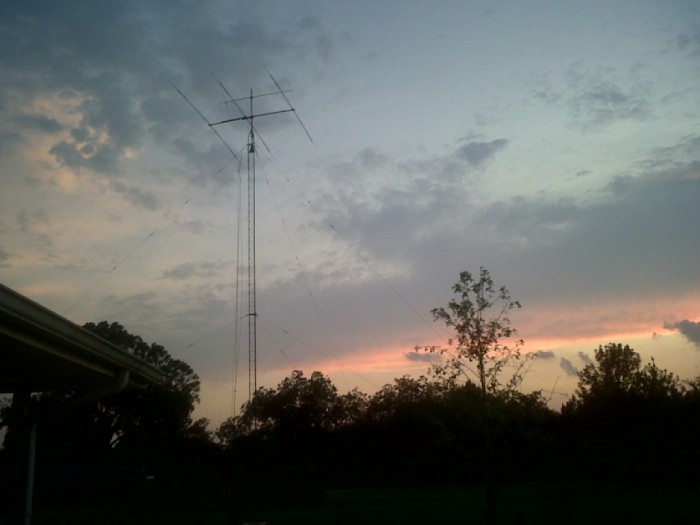[Today’s run: 2 miles with the dog, Yesterday: 5 miles with the Boardtown runners]
One of the aspects of ham radio that I have not very much explored is space weather.
You might find that phrase “space weather” kind of strange. I do. Are there clouds and wind in space? In a radio context most of the weather in space is related to energy and particles which come to us from the sun. Also things like sunspots fall in this area.
Radio signals go in more or less straight lines. Signals below a certain frequency (with longer wavelength) are turned back by the particles in our atmosphere and refract toward the earth. In this way a signal can be bounced between ground and sky and go clear around the globe. Our atmosphere is energized by energy that comes from the sun. So it has been established that which radio signals bounce (and which do not) is directly related to happenings on the sun. A few days ago there was a large solar flare, a discharge of stuff from the sun’s surface. If such a thing happens when the sun is pointed in our direction then we get a blast of energy. Over the course of a few days we receive light, then energized particles. Our atmosphere reacts and the nature of radio signal propagation changes.
We had such an event, I believe it was on the 5th, and yesterday most of the usual radio activity down to about 10 Mhz was curtailed. There was a lot more noise and signals could not get through.
This same effect causes Aurora Borealis or Northern Lights. People were seeing Aurora lights down into the top rows of US states during the past few nights.
But the radio spectrum is starting to calm down today and I am hearing signals again on the 14 mhz amateur radio band.
As I said, I don’t know much about this area of radio exploration but I’m learning a bit. It is pretty amazing stuff. I find this little on-line write-up to be very helpful: Handyman’s Guide to Solar Activity and HF Propagation for the QRP’er
Picture for today is my tower and antenna at sunset last night.
